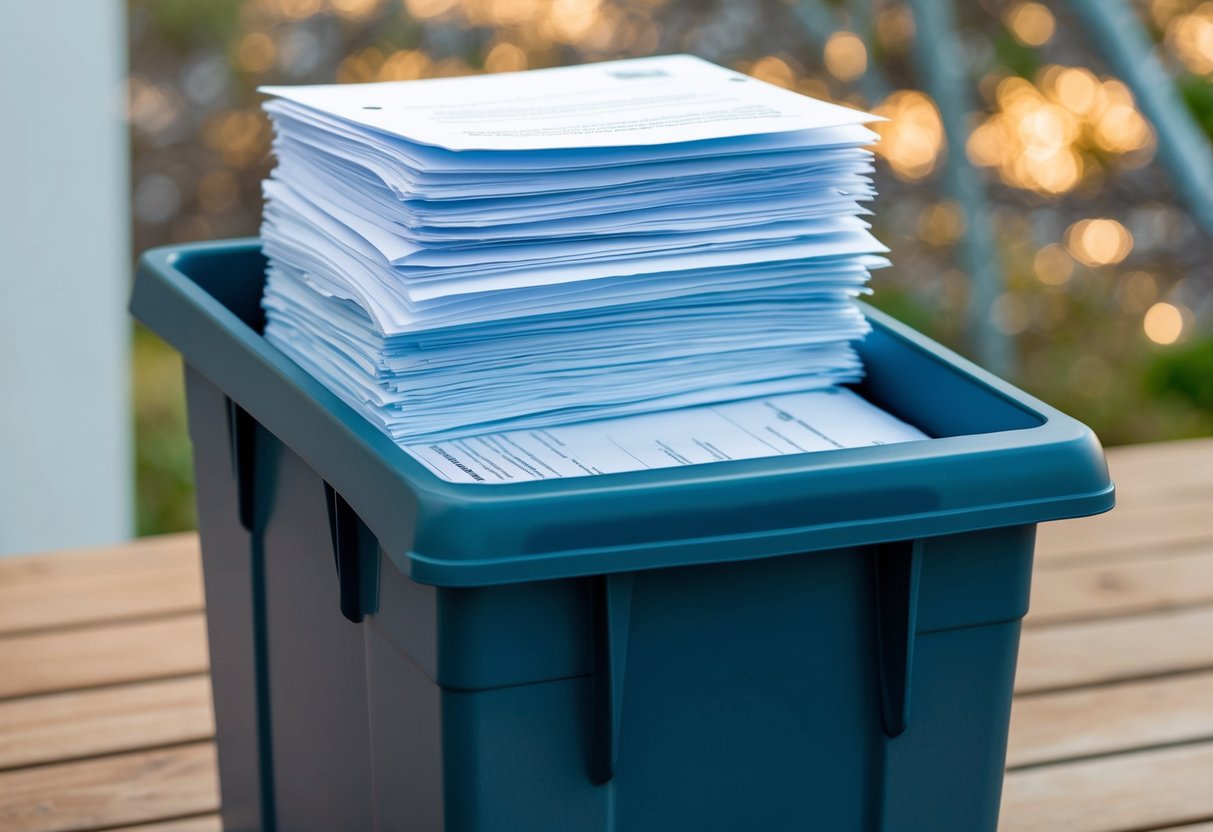Understanding Off-Site Shredding

Off-site shredding involves transporting documents to a secure facility for destruction. It is a reliable option for managing sensitive and confidential information, providing additional security measures and cost efficiency.
Benefits of Off-Site Shredding
Off-site shredding offers several advantages. First, it ensures a high level of security. Documents are handled by professional shredding companies with secure transport processes. This minimizes the risk of data breaches during transportation.
By using industrial shredders, we can destroy large volumes of documents efficiently. This is especially useful for businesses with a lot of paperwork to shred. With it, we save time compared to smaller shredders or manual methods.
Finally, off-site shredding is usually cost-effective. Companies often charge less per pound compared to on-site shredding, making it an economical choice for regular shredding needs.
Differences Between Off-Site and On-Site Shredding
On-site shredding, often called mobile shredding services, takes place at our location. This is convenient since we can witness the destruction.
In contrast, off-site shredding involves taking the documents to a secure facility. This might feel less immediate, but it’s just as secure. The shredding companies follow strict protocols to safeguard our documents.
For larger volumes, off-site shredding often proves more efficient. Industrial shredders at these facilities can handle more documents faster than mobile shredders. We can choose based on our specific needs and the amount of material we have.
Types of Documents for Shredding
When deciding what to shred, we must focus on sensitive information. This includes financial reports, legal contracts, and any document with confidential information. Personal data like social security numbers or personal addresses should also be shredded.
Business records that are no longer needed but contain sensitive details are prime candidates. It’s important to review company policies to determine which documents can be stored and which should be shredded regularly.
Document shredding services can guide us on specific types of paper that require destruction, ensuring compliance with privacy laws and safeguarding our information.
Preparing for the Shredding Process

When getting ready for document shredding, deciding what needs shredding and removing anything that can’t be shredded is crucial. We should also choose a shredding service carefully to ensure personal information is handled properly.
Sorting Documents by Retention Schedule
Sorting documents based on their retention schedule is important to ensure compliance. We need to review our document retention policy to determine which papers can be destroyed. Financial records and personal files should be checked against their respective timelines.
Select only those documents that have fulfilled their retention period for shredding. This way, we maintain confidentiality while ensuring important documents are kept only as long as necessary.
Removing Non-Shreddable Materials
Before shredding, we must remove non-paper materials like binder clips, plastic covers, and metal fasteners. These materials can damage shredding machines.
Separating these items from paper will help achieve efficient document destruction. Additionally, this step helps avoid unnecessary delays and increases the effectiveness of the shredding process. Pockets, staples, and plastic bindings need careful attention as well.
Choosing the Right Shredding Service
Selecting a reputable shredding service ensures that document destruction is reliable and professional. We should look for services certified by recognized bodies to guarantee they meet compliance standards.
A good choice would offer secure handling and transportation of documents. Inquire about their confidentiality practices to ensure security throughout the shredding process. Comparing several options helps us find the most suitable service for our needs.
After Shredding Considerations
After documents are shredded off-site, it is important to address two key areas. First, we must ensure we receive a Certificate of Destruction, which verifies secure handling. Second, we need to understand recycling and privacy laws to maintain compliance and protect confidentiality.
Receiving the Certificate of Destruction
After our documents are shredded, receiving a Certificate of Destruction is crucial. This certificate serves as proof that a professional document shredding company handled our materials safely and securely.
It assures us that all documents were destroyed according to industry standards and relevant laws, like HIPAA compliance. The certificate typically includes the date, time, and method of shredding, further cementing our commitment to confidentiality. We should store this document in our records to provide necessary evidence during audits or compliance checks.
Understanding Recycling and Privacy Laws
Recycling laws and privacy regulations impact the shredding process. We must be aware that these laws vary by region, so it’s important to research and adhere to local requirements.
When using a secure shredding service, it typically involves recycling the shredded material, aligning with environmental goals. Additionally, privacy laws such as HIPAA require us to maintain the confidentiality of sensitive information.
We must ensure compliance by verifying that our shredding service follows these legal guidelines, avoiding penalties or breaches. Informed decisions help us protect both the environment and our data.





